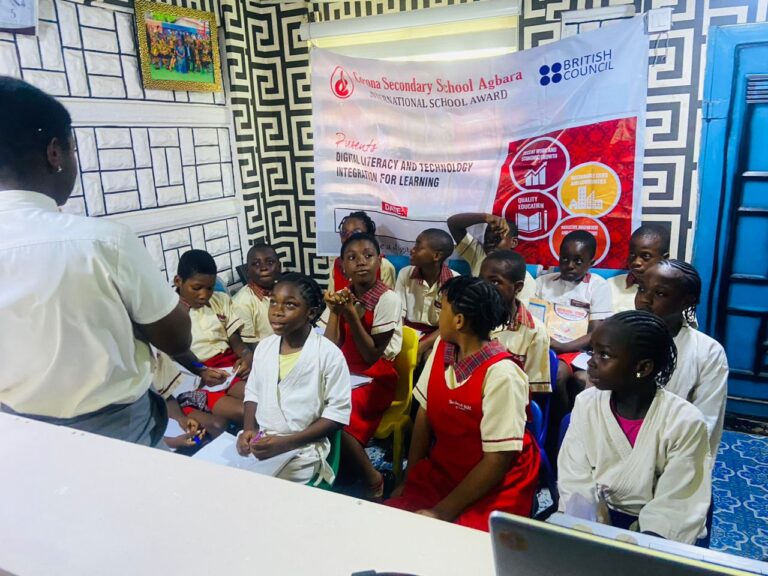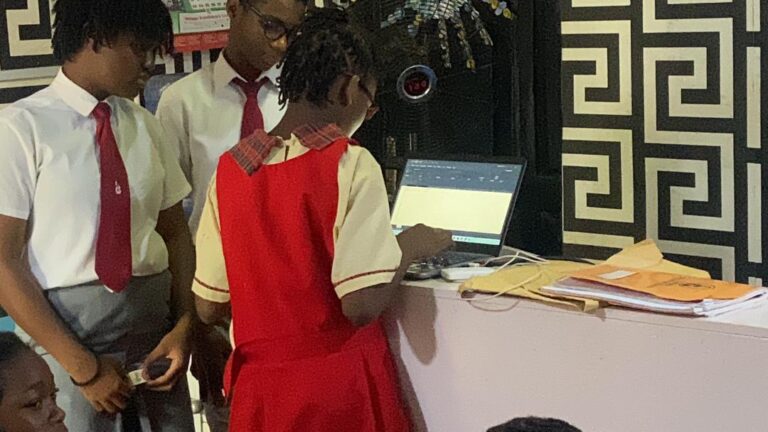Activity Period: April to June 2024
Relevant SDG(s):
1. SDG 4 – Quality education aim to promote inclusive and high-quality learning towards equipping all learners with certain skills.
2. SDG 9 – Industry, innovation and infrastructure seeks to build resilient infrastructure, promote sustainable industrialization and foster innovation.
Research shows that more than 4 billion people still do not have access to the Internet, and 90 percent are from the developing world. Bridging this digital divide is crucial to ensure equal access to information and knowledge, as well as foster innovation and entrepreneurship.
Subject Areas: ICT, Data Processing, Sociology, Mathematics
Class: Year 11
Number of Students: 70
Teacher Responsible: Mr. Anthony Udeogu
Other members of staff involved: Teachers: Mrs. Ibironke Sonuga
Aims:
• To improve access to educational technology and surfing of materials on the internet for learning.
• To bridge the digital divide by giving equal educational opportunities to all student
• To foster collaboration and intercultural understanding between students from different schools
• To encourage the sharing of best practices and ideas in integrating technology into education
Activity Description:
1. INTRODUCTION: Students performed a feasibility study of nearby community schools to determine the one with the most pressing need in terms of digital inclusion and education.
Based on their findings, students chose the school identified as being in dire need of digital inclusion.
2. PREPARATION: Students forwards letter of introduction the community school stating their intentions. Students contributed n agreed sum of money for the project using their pocket monies. Students draw up schedule for six-week training session and embark on further practice sessions.
3. DIGITAL LITERACY EDUCATION: As planned, students visit in batches to facilitate practical ICT sessions with the community school. These include how to use Microsoft word for documents and letters, Excel for formatting, organizing and calculating data and Power Point Presentation to create interesting and captivating presentations.
Students purchase computer system and donate it to the beneficiary school.
Students’ follow-up twice a week.
Outcomes:
1. Students had the privilege to survey the community to assess the areas of needs thereby gaining the necessary skills for research.
2. Students learnt how to collaborate towards solving challenges in the community.
3. Students built and maintained positive relationship with peers from the beneficiary school.
4. Students demonstrated morally acceptable skills of empathy and problem solving.
5. Students gained deeper understanding of digital tools as they facilitated various learning processes.
Evaluation Evidence: Mail trail, pictures, form
Impact:
Material Access: Pupils have easy access to a wealth of material on the internet, which allows them to learn and do research on a wide range of subjects outside the scope of textbooks.
Critical Thinking: As students go through various information sources and separate dependable sources from dubious ones, it fosters critical thinking and evaluation abilities.
Communication: Using a variety of digital channels, digital literacy improves communication abilities and promotes international collaboration with peers and specialists.
Creativity: Using digital technologies like multimedia presentations, digital art, and video production enabled the students to express their creativity and improve their learning and engagement.
Problem Solving: By asking students to use digital interfaces, solve technological problems, and adjust to new software or programs, it helps them build their problem-solving skills.
Career Development: In today’s labour economy, digital literacy is becoming more and more crucial, this has provided students from both schools with the 21st Century skills in the digital world.
Follow-Up:
Students will visit the school every Wednesday for follow up. Students will repeat the same processes in another year group.












